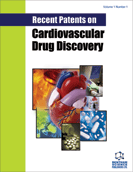Abstract
Valvular heart disease, inherited or acquired, affects more than 5 million Americans yearly. Whereas medical treatment is beneficial in the initial stages of valvular heart disease, surgical correction provides symptomatic relief and long-term survival benefits. Surgical options include either repair or replacement using mechanical or bio-prosthetic valves. Patient age and the post-operative need for anticoagulation therapy are major determinants of the choice between use of mechanical or bio-prosthetic valves. Since the first mechanical valves were made available several decades ago, the incorporation of increasingly sophisticated materials and methodologies has led to substantial improvements in the valve design, and has catalyzed a parallel increase in the amount of patents issued for these emerging technologies. In this paper, we have chronologically reviewed such patents, briefly discussed various challenges that mechanical heart valve implementation is faced with and finally reviewed some of the strategies employed to overcome such obstacles. An ideal prosthetic heart valve would comprehensively mimic the natural hemodynamics and physiology of the native heart valve. Additionally, such a valve would be easily implantable, associated with a minimal risk of thrombosis and thus need for anti-coagulation, and with a proven long-term durability. With cutting edge technological advancements in the recent times, the ongoing innovative and collaborative efforts of physicians, scientists, and engineers will not seize until an ideal mechanical heart valve becomes a reality.
Keywords: Valvular heart disease, mechanical valves, patents, cardiothoracic surgery.
 34
34


